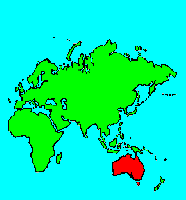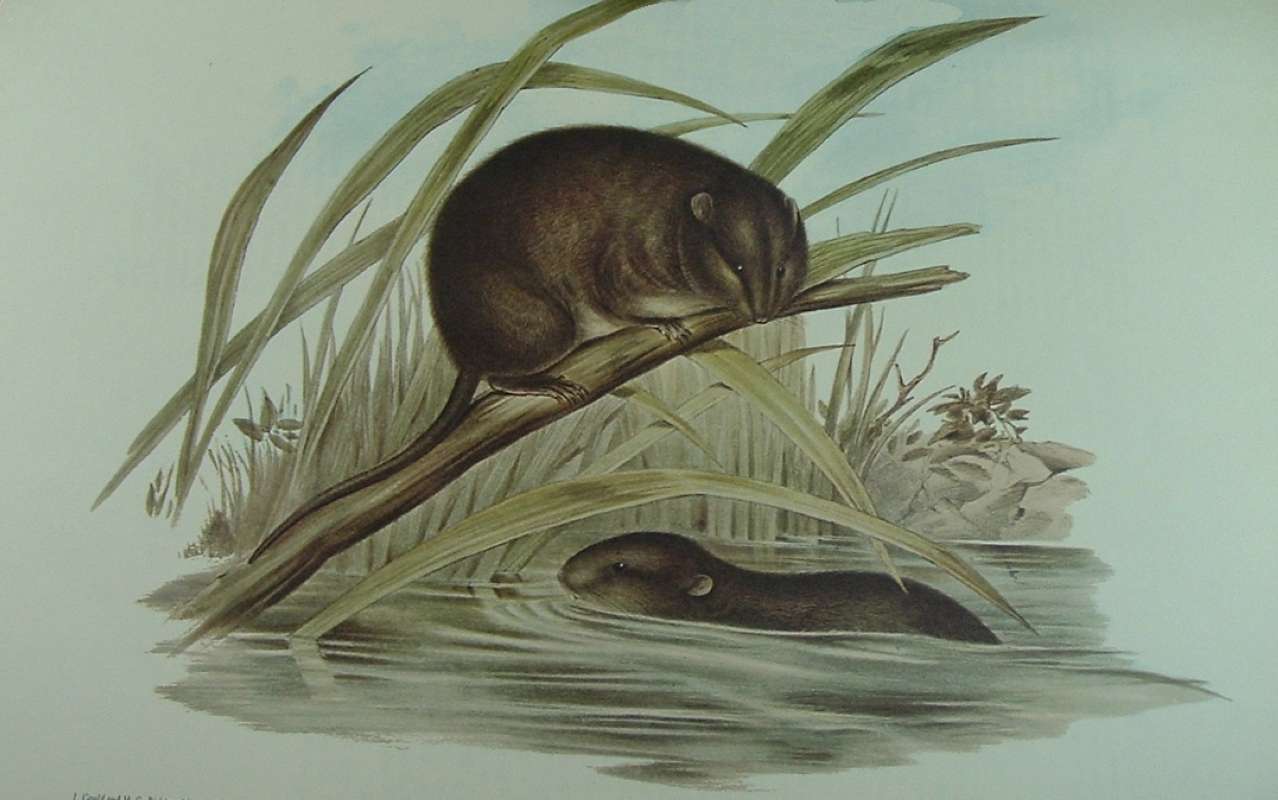SPECIES INFO
Australian bush rat (Rattus fuscipes) is found in lowland coastal Australia in several disjoint areas. This is found in Queensland, New South Wales, Victoria, South Australia, and Western Australia. This small rat is from about 4 to 8 inches in length.
There are at least 4 subspecies including ssp fuscipes from Western Australia, ssp greyi from South Australia, ssp similis from Victoria, New South Wales and southern Queensland, and ssp coracius from coastal central Queensland.Old World rats and mice (Muridae) family comprises just over 500 species that originated in the Old World. This is a successful group. They mature quickly and breed rapidly. The Norway rat (Rattus norvegicus) and house mouse (Mus musculus) belong here. Many species are serious crop and stored food pests. Many species are known to carry disease
There are probably as many ways to break down the mice and rat group as there are taxonomists. We have chosen to follow Duff and Lawson where they include mice, rats, voles, and gerbils with a total of 1,394 species in this large family. They further break this family down into various subfamilies. The largest subfamily is the Murinae which includes the common rat and true mice. Another large subfamily with 140 members is the Arvicolinae which includes the voles, lemmings, and muskrats.
Rodents (Order Rodentia) are a large group of usually small mammals that are found throughout the world. Rodents can be called the gnawing mammals. There are between 1700 and 2300 species, depending upon which authority is used, representing a high percentage of the known mammal species. Duff and Lawson list over 2,100 species.
The diversity here is tremendous: Capybaras, visachas, acouchy, mountain beaver, typical beaver, guinea pig, porcupine, vole, muskrat, mouse, rat, chipmunk, ground hogs, and squirrels all belong here.
Mammals (Class Mammalia), together with the birds, are among the youngest of the classes of animals. In species count, mammals number about fifty-one hundred, trailing reptiles (approximately fifty-five hundred), fish (approximately eighteen thousand), and birds (approximately eighty-six hundred).
There are three sub-types of mammals:
monotremes, the most primitive:
Develop in reptilian-like eggs and suckle milk emerging
(i.e., spiny anteater, duckbilled platypus)
marsupials
Newborn emerges very underdeveloped and continue to
mature in a pouch on its mother's abdomen (i.e., opossums,
koala, kangaroo)
placental
Embryo develops within the uterus of the female and is
dependent on a placenta for nutrition and waste removal
(i.e., humans, lions, monkeys)
About sixty-five million years ago, the Tertiary era produced thirty-five orders of mammals. Of this number, eighteen have survived to represent Earth's most diversified as well as its most highly developed classification of animals.
Extinction of mammals is fast becoming a serious issue. Duff and Lawson present a list of forty-one extinct species that reached extinction prior to 1800. These forty-one species are not acknowledged in the counts of the various families. Duff and Lawson also present a list of forty-six species including three gazelles, one zebra, one seal, one deer, and one wolf that have probably gone extinct since 1800. These forty-six species are included in the family counts. Science is adding about forty to fifty new species a year to the list. Many of these are the result of divisions of prior species; some are recent discoveries.
Mammals owe their survival to adaptive capabilities that include the ability to exploit whatever sources of food are available to them, as well as their ability to adjust to various climes. Food specialization influenced evolution to such a great extent that the teeth structure can and has been used to provide extensive information on the food needs and various lifestyles of extinct species.
Despite the vast diversity among mammals in terms of size, habitats and adaptations, they share without exception many characteristics such as:
a. body hair
b. mammary glands
c. certain skull characteristics
d. four limbs that permit speed
e. parallel not perpendicular limbs
f. compartmentalized internal organs
g. a four-chambered heart and pulmonary circulation
Backboned Animals (Phylum Chordata) are the most advanced group of animals on earth. These animals are characterized by having a spinal cord or backbone. Most members have a clearly defined brain that controls the organism through a spinal cord. Fish, amphibians, reptiles, birds, and mammals are in this phylum.
Currently, some taxonomists believe that the fish should be divided into two groups (sharks and regular fishes) and that there are some other primitive groups in the phylum such as hagfish or lampreys.
Animal Kingdom contains numerous organisms that feed on other animals or plants. Included in the animal kingdom are the lower marine invertebrates such as sponges and corals, the jointed legged animals such as insects and spiders, and the backboned animals such as fish, amphibians, reptiles, birds, and mammals.


